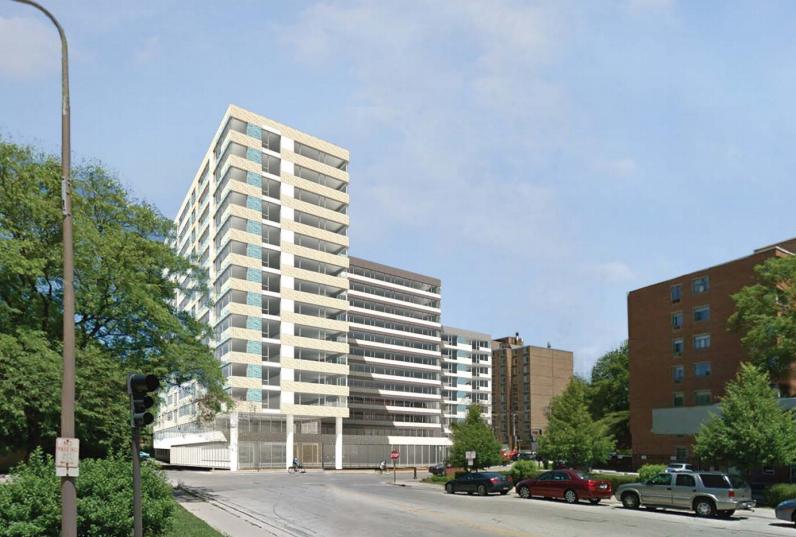Proposed apartment high-rise targets NU students
An initial rendering of the proposed housing development on Emerson Street. The high-rise, which would be targeted toward students as tenants, is still in preliminary planning stages.
September 23, 2015
A plan to build Evanston’s first large-scale private student housing faces concerns from city staff and residents about issues such as the building’s height.
The 14-story high-rise, which is still in its preliminary planning stages, would occupy a lot near Northwestern’s campus just west of the intersection of Emerson Street and Sherman Avenue. After a few meetings with representatives from the developers, city staff has taken issue with the proposed building’s size and inadequate amount of parking, said Mark Muenzer, the city’s community development coordinator.
The apartment building, proposed for 831 Emerson St., would have 297 units — one-third of which are studio apartments, Muenzer said. The project would require relocating a 7-Eleven convenience store to the southwest corner of the 42,000-square-foot lot, he said.
During a meeting of 1st Ward residents earlier this month, members of the community also voiced concern over the building’s height, which is 145 feet at its highest point, Muenzer said. Some residents also worried about an apartment building housing predominantly students, he said.
Although the city is uncertain about the current proposal, Paul Zalmezak, the city’s senior economic development coordinator, said he sees a growing market for higher-end housing among students.
“If demographers are right about millennials, they’re into shared spaces,” Zalmezak said. “A single-family house that is in rough shape might not be as appealing to a new crowd of students.”
However, city manager Wally Bobkiewicz told The Daily last week that there is potential for NU’s upcoming housing policy change to have a “chilling effect” on the Emerson Street development.
Starting in the fall of 2017, NU will require that all students live on campus during their freshmen and sophomore years, said University spokesman Al Cubbage. The policy, which Cubbage said is intended to create a greater sense of community among students, apply to freshmen entering fall 2017.
Currently, about 4,000 undergraduate students live on campus in residence halls and another 900 live in fraternity or sorority houses, Cubbage said.
To gauge the project’s potential success, Zalmezak said he would like to see data from the developers on how many students would be attracted to the apartments rather than the city’s single-family homes. If there is a possibility of significant migration to the high-rise, the city could benefit from the vacated homes and could consider using them for affordable housing, he said.
Muenzer said the developers will start the city’s formal approval process after they present revisions of their design at another community meeting.
Email: juliajacobs2018@u.northwestern.edu
Twitter: @juliarebeccaj



